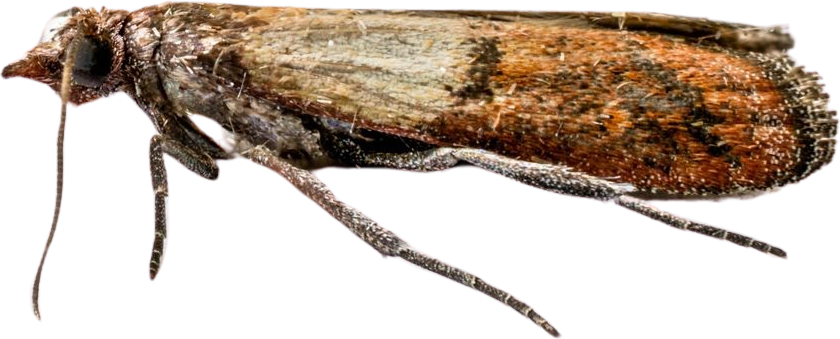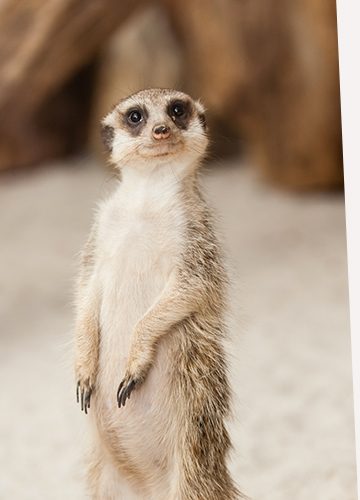LATEST UPDATE: December 2024
As humans, we’ve been watching, admiring, studying, cataloging, hunting, and capturing wildlife since time immemorial, and our relationship to all of the species we share this planet with is complicated, to say the least. Some wild animals are seen very differently from the animals we farm for food, and the animals we call our companions, and instead are regarded as symbols of freedom and the natural world. Other wild animals are seen as pests, vermin, or direct threats to human survival. This exclusive Faunalytics Fundamental examines our relationships with wild animals in broad strokes, as well as various wild animal issues that have arisen in recent years, based on the best available and current data. Be sure to check out the blog about what we included, and what we left out here.
Meet the Animals
No matter where you live in the world, wild animals are all around you. There are plenty of wild animals that you probably see day-to-day — birds, urban animals, and common insects – but there are many, many more species that you likely don’t see. Our planet is home to millions of species of different animals, each of whom contribute to their respective ecosystems and play their respective roles. Truly, the depth and breadth of animal life on Earth is astounding. Rather than pick a few species, the table below looks at a handful of broad categories of wild animals and some quick facts about them.

Land Mammals
There are an estimated 100 billion land mammals living around the world.
- Winning Personality – Mammals comprise 18 out of 20 of the most charismatic species of animals
- Dwindling Populations – An estimated 83% of wild land mammal populations have been lost since the rise of human civilization
- An Important Fraction – Wild mammals make up just 4% of the total mammal biomass on earth. Farmed animals make up 60%, and humans make up the 34% that is left

Ocean Life
By some estimates, there are approximately 10 trillion wild fishes in the world.
- In Need Of Protection – The earth is more than 70% covered in oceans, lakes, and rivers, but only 8% of marine areas have some kind of protection
- A Deep Downturn – Overall marine populations showed a decline of about 49% from 1970-2012
- Sensitive To Sound – Marine life from mussels to whales are susceptible to human-made underwater noise

Avian Species
We used to think there were only 10,000 species of birds, but that number is now estimated at ~18,000.
- Hopeful Monsters – Birds made a sharp evolutionary leap to emerge from dinosaurs, and are the only animals with feathers
- Farmed vs. Wild – Only 30% of all of the birds on earth are wild – the rest are farmed birds like chickens and turkeys
- Clear Dangers – Hundreds of millions of migratory birds are killed by human-made glass structures

Insects and Invertebrates
There are about 900,000 different species of insects, about 80% of the world's animal species.
- Imminent Danger – About 40% of insect species are declining and at risk of extinction, double the rate for vertebrates
- Essential Services – Insect pollinators are responsible for approximately 5-8% of global food production
- New Threats – Insect life may face new threats as humans look to consume them as an alternative protein source
Attitudes
Opinions about wild animals vary greatly depending on the species, and the questions being asked. If the question is about a species of “charismatic megafauna” like elephants, you may find the vast majority of people love them and want to see them survive and thrive — unless they are farmers who have their crops destroyed by elephants; if the question is about an urban “pest” species like raccoons, you may hear even more derogatory opinions. In other words, our opinions about wild animals depend on our context, and the overall material and cultural relationship we have with them. Below, we explore some of the attitudes towards wildlife, as well as related laws, in the United States.
Of course, attitudes vary depending on cultural context — what’s true in the United States may not be true in France, which may not be true in Malaysia.
It’s also worth noting that these attitudes aren’t fixed — they’ve changed over time and will likely change in the future. And because our opinions about wild animals are so context-dependent, they will shift as our context does. This means that if animal advocates want to help wild animals, we need to find ways to build positive relations and associations between them and the public.
Trading: Parts & Pets
It may seem obvious to most animal advocates, but wild animals are supposed to live in the wild regions they come from. Unfortunately, many wild animals are targeted for removal from their home ranges, because humans want to use them for various reasons: some wild animal parts and skins are used as trophies from hunts; other animal parts, like rhino horns, are used in traditional medicines based on the belief they may increase vitality and treat cancer. In other cases, wild animals are taken from their homes and traded live as “exotic” companion animals, further highlighting the fact that some species are seen more like the dogs and cats we already live with. The common thread in each of these cases, however, is that humans are their biggest threat.
In our Companion Animal Fundamentals, we looked at the “surplus” of dogs and cats in the world, and how this overpopulation keeps shelters full. For exotic companion animals the reality is different, but equally tough. Wild animals are captured, and often bred in operations designed to produce as many young as possible, as quickly as possible. From there, they find their way into homes through exotic pet stores, public auctions, or largely unregulated online trading. At every stage of this trade, animal welfare and cruelty issues abound, often due to guardians’ lack of knowledge, and veterinarians’ lack of experience. Below, we delve into some statistics relating to exotic companion animals around the world, with a spotlight on the United States.
Climate Change & Wildlife
In some ways, exotic companion animals are shielded from an even worse fate (that is also wrought by humans): climate change. While the full extent of climate change’s effects remain to be seen, there are so many ways that it is already impacting wild animals around the world.
This is just the tip of the iceberg (no pun intended). Based on future projections, the impacts of climate change are only going to get worse. Below, we look at some of the projections that have been made about how climate shifts around the globe will impact various species. The possibilities are truly disastrous and demand urgent attention.
Zoos & Aquaria
Wild animals have always fascinated humans. While many “accredited” zoos and aquaria today are promoted as a source of scientific education, the history of those institutions is based in colonialism: zoos and menageries began as a way for empires to show their literal reach, collecting “exotic” animals from the colonies and gathering them together back home. Since those times, zoos have pivoted, from a way for empires to show their superiority, to a commercial enterprise like any other. Below, we look at some statistics about the captive animal industry.
One of the biggest arguments in favor of zoos (often put forward by zoo associations themselves) is that they are educational institutions that promote conservation and positive feelings towards wild animals. This is a claim that has been studied to varying degrees, and those studies lead us to believe that, while the public wants to believe in zoos’ education value, this transmission of information isn’t nearly as effective as we might think.
Zoos can continue to change, and they have the potential to play a more beneficial role for wild animals than they have in the past. Some zoos have included native wildlife rehabilitation in their work; animals as varied as manatees, otters, seals, sea lions, whales, pelicans, turtles, tortoises, bears, foxes, squirrels, bears, owls, hawks, eagles, condors, and even honeybees, have been successfully rehabilitated by zoos. Could the functions of zoos of the future be to rescue, rehabilitate and release orphaned or injured native wildlife, and to provide life-long care and sanctuary for those individual animals that cannot survive on their own if released back into the wild? Some zoos agree, and they have already moved in this direction.
Promoting Conservation
There are many, many groups around the world that promote conservation, and do hands-on work to protect wild animals around the globe. This work ranges from protecting land where animals live, to rehabilitating wildlife, to removing pollution from habitats… The types of action are almost as varied as the groups themselves. Below, we look at some conservation successes of the last several decades that may offer us hope.
Wild Animal Welfare
And finally, no discussion of advocacy for wild animals would be complete without a discussion of the emergent academic study and advocacy field of wild animal welfare / wild animal suffering (WAW/WAS). In recent years, organizations such as the Wild Animal Initiative, Animal Ethics, and others have put forward provocative and challenging ideas that have the potential to reimagine how we approach wild animal issues. In a soon-to-be-published visual, we will provide an overview of WAW/WAS, and some key issues in that field.
This Faunalytics Fundamental has provided a visual overview of just some aspects of our relationship with wild animals. Though we’ve tried to give you the big picture of the most important topics, there is much more than could be covered. Whether you’re new to wild animal issues and advocacy, or a veteran, we think you’ll find the data above to be useful in a variety of ways, and we’d love to hear how you use it in your work.
We hope the data presented here also encourages advocates to ask questions about how to be more effective and how best to invest our limited advocacy resources:
- What are the most pressing ways that wild animals suffer and how can advocates make meaningful, practical interventions on their behalf?
- How can advocates change people’s attitudes toward “pest species”?
- How can animal advocates encourage change in the captive animal industry by pressuring zoos, aquariums, and other entities?
- How can the average person living in a city, suburb, or rural community help wild animals?
- Can compassion for companion animals be effectively extended to wild animals?
These are questions advocates should think about and possibly research further.
There is so much more work to be done to give advocates the insight they need to choose the most effective ways to help animals. Please donate generously now to help us bring you and other advocates this crucial information.
This project was supported by the Regina Bauer Frankenberg Foundation.



